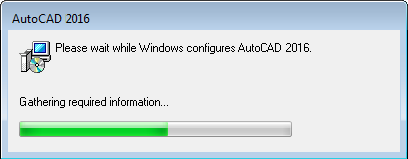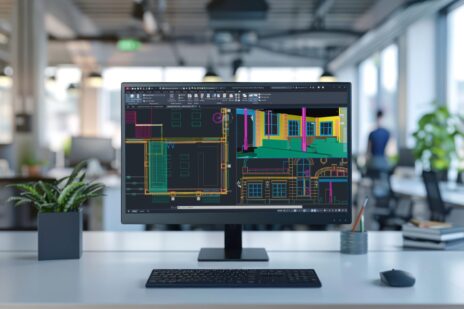
In Bootstrap AutoCAD Deployments for Customizations Part 1, I introduced the idea of deploying AutoCAD® so that your customizations are available to your users. This method is applicable no matter how many users you support.
OK, first the basics. There are two parts to every AutoCAD installation: the admin-level install and the user-level install. The admin-level install needs to be run only once per machine, and is often considered to be the deployment.
If AutoCAD required only the admin-level install, I wouldn’t be writing this series of blog posts. There are lots of tools out there for admin-level deployment modifications.
Regular AutoCAD deployments: The secondary installer
Because AutoCAD includes user-specific settings and files, when the application runs for the first time, per user, it launches a secondary installer. It is this secondary installer that creates headaches for many companies creating an AutoCAD deployment strategy.
The secondary installer creates user-specific folders and files critical to the user’s experience. For example, the CUIx files that store the information for the AutoCAD user interface, including the Ribbon, are unique files for each user on the computer.
If IT simply accepts the AutoCAD install defaults, every user will have a consistent experience, and IT will have an easier time of things. But running AutoCAD with no customizations is like driving a no-frills economy car. Sure, it gets the job done. But you’ll get there more quickly and comfortably if you were driving a convertible sports car.
Customization deployment options
Can you package enough customizations into the deployment and call it a day? Not really: this approach will not accommodate future modifications. In my experience, you will almost certainly need to make several modifications within a year’s time—and that’s just not reasonable for IT. The updates will be tedious at best and nearly impossible at worst.
So what is the resolution?
I will describe several scenarios. Pick the one you like. I know which one I like. I’m betting you’ll like it too and will stay tuned for the next installment.
IT “I’m going to ignore customizations” deployments
This scenario goes like this:
- IT creates the deployment using all the defaults
- The CAD manager instructs users on how to add the needed customizations
- The CAD manager hopes users follow the instructions
Is this really how you want to manage things?
Typical customized deployments
The typical customized deployment scenario goes like this:
- The CAD manager makes sure the customizations are available (locally or on the network)
- IT creates a deployment with a profile that “sees” the customizations first
- IT deploys a shortcut that launches AutoCAD with the required profile
This approach nearly covers it. But, thanks to the secondary installer, there are a few issues.
- The secondary installer creates the user profile
- To launch AutoCAD with the correct profile, the user must use the provided shortcuts
- Launching the wrong profile leaves the user in a bad way
For this deployment to work completely, the user must be the only user on that computer and then has to use the correct shortcut. If I had a nickel for every user who skipped their desktop shortcut and instead launched AutoCAD from the Start menu or by double-clicking a drawing file… D’oh!
Bootstrap deployments
A bootstrap deployment scenario looks like this:
- The CAD manager makes sure the customizations are available on the network
- IT creates a deployment that has only one modification
Here are the advantages:
- If customizations change, IT does not need to change the deployment
- When the user runs AutoCAD the first time, regardless of how the application is launched, the customizations get added
Wait a second. You mean that bootstrapping adds the customizations… no matter how the user first launches AutoCAD? Sign me up for that!
Up next: Bootstrap AutoCAD Deployments for Customizations Part 3
The bootstrap deployment process recognizes when AutoCAD is launched in the default state that IT loves so much. At this point it will take over and import the needed profiles so users can quickly get to work using the company’s customizations.
I will go into details of how bootstrapping works next week: Bootstrap AutoCAD Deployments for Customizations Part 3.



